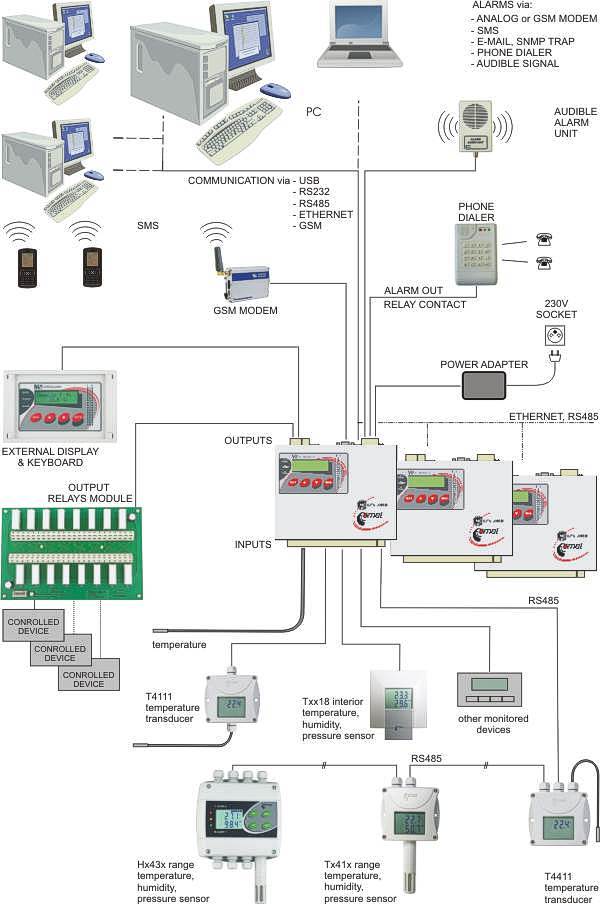Unlocking Insights: The Power of Data Acquisition Systems
Unlocking Insights: The Power of Data Acquisition Systems
Blog Article

In today's data-driven world, the ability to gather and analyze information is more crucial than ever. Organizations across various sectors are increasingly relying on sophisticated data acquisition systems to make informed decisions and harness the power of data. These systems enable the collection of real-time data from numerous sources, transforming raw information into valuable insights that can influence strategies and drive success.
As we delve deeper into the intricacies of data acquisition systems, it becomes clear that they play a vital role in optimizing operations, enhancing research, and improving overall efficiency. By understanding the mechanisms behind these systems, businesses can unlock the potential hidden within their data, leading to innovative solutions and competitive advantages in their respective industries.
Understanding Data Acquisition Systems
Data Acquisition Systems (DAS) are critical tools used to collect, measure, and analyze data from various sources. These systems play a significant role in multiple industries, including manufacturing, environmental monitoring, and healthcare. By converting real-world signals, such as temperature, pressure, and humidity, into digital data, DAS enables organizations to monitor performance, identify trends, and make informed decisions.
A typical Data Acquisition System consists of sensors, signal conditioning units, analog-to-digital converters, and software for data analysis. Sensors gather information about physical phenomena, which is then conditioned to remove noise and improve the signal quality. The analog signals are converted into digital form, allowing for easy storage, manipulation, and visualization. This structured approach to data collection ensures that users can rely on accurate information for their operations.
Moreover, modern Data Acquisition Systems offer advanced features such as real-time monitoring, remote data access, and integration with other software tools. These enhancements have transformed DAS from simple data collection devices to sophisticated systems that facilitate complex analyses. As technology continues to evolve, the capabilities of Data Acquisition Systems will expand, providing even greater insights into data-driven decision-making processes.
Key Components and Technologies
See More
A Data Acquisition System primarily consists of sensors, signal conditioning units, data converters, and a data processing unit. Sensors are essential as they detect physical phenomena such as temperature, pressure, and light, converting these measurements into electrical signals. The signal conditioning unit enhances these signals, ensuring they are suitable for further processing. This stage may involve amplification, filtering, or isolation, which is crucial for accurate data representation.
Data converters, including analog-to-digital converters, play a pivotal role in transforming analog signals from sensors into digital data that computers can interpret. High-resolution converters enable the acquisition of precise measurements, making it possible to monitor subtle changes in the environment or system being studied. This digital data is then sent to the data processing unit, which organizes, analyzes, and stores the information for further use.
Communication technologies also form an integral part of Data Acquisition Systems. These can include wired interfaces, such as USB, Ethernet, and serial connections, as well as wireless technologies like Wi-Fi and Bluetooth. The choice of communication method affects the system's flexibility and range, allowing for real-time monitoring and remote data access. Understanding these components and technologies is key to implementing effective Data Acquisition Systems tailored to specific applications.
Applications and Benefits
Data Acquisition Systems are integral to various fields, including engineering, environmental monitoring, and healthcare. In engineering, these systems enable the collection of data from sensors and instruments, facilitating real-time analyses and adjustments in processes. For instance, in manufacturing, they help optimize production lines by monitoring machine performance and identifying potential faults before they lead to significant downtimes. This proactive approach not only enhances productivity but also minimizes costs associated with maintenance and repairs.
In the realm of environmental monitoring, Data Acquisition Systems play a critical role in tracking changes in natural resources and conditions. They are employed in weather stations, pollution monitoring stations, and water quality assessments. By gathering data over time, researchers can identify trends, anticipate environmental changes, and develop strategies for sustainability. The automation of data collection also increases the accuracy of measurements, allowing for more reliable research and informed decision-making.
The healthcare industry benefits from Data Acquisition Systems through improved patient care and operational efficiency. These systems enable continuous monitoring of vital signs and other health metrics, which is crucial for early detection of potential health issues. Additionally, integrating data from various sources enhances clinical decision-making, leading to better treatment outcomes. Hospitals can also streamline their operations by analyzing data trends, ensuring resources are allocated efficiently, and improving overall patient experiences.
Report this page